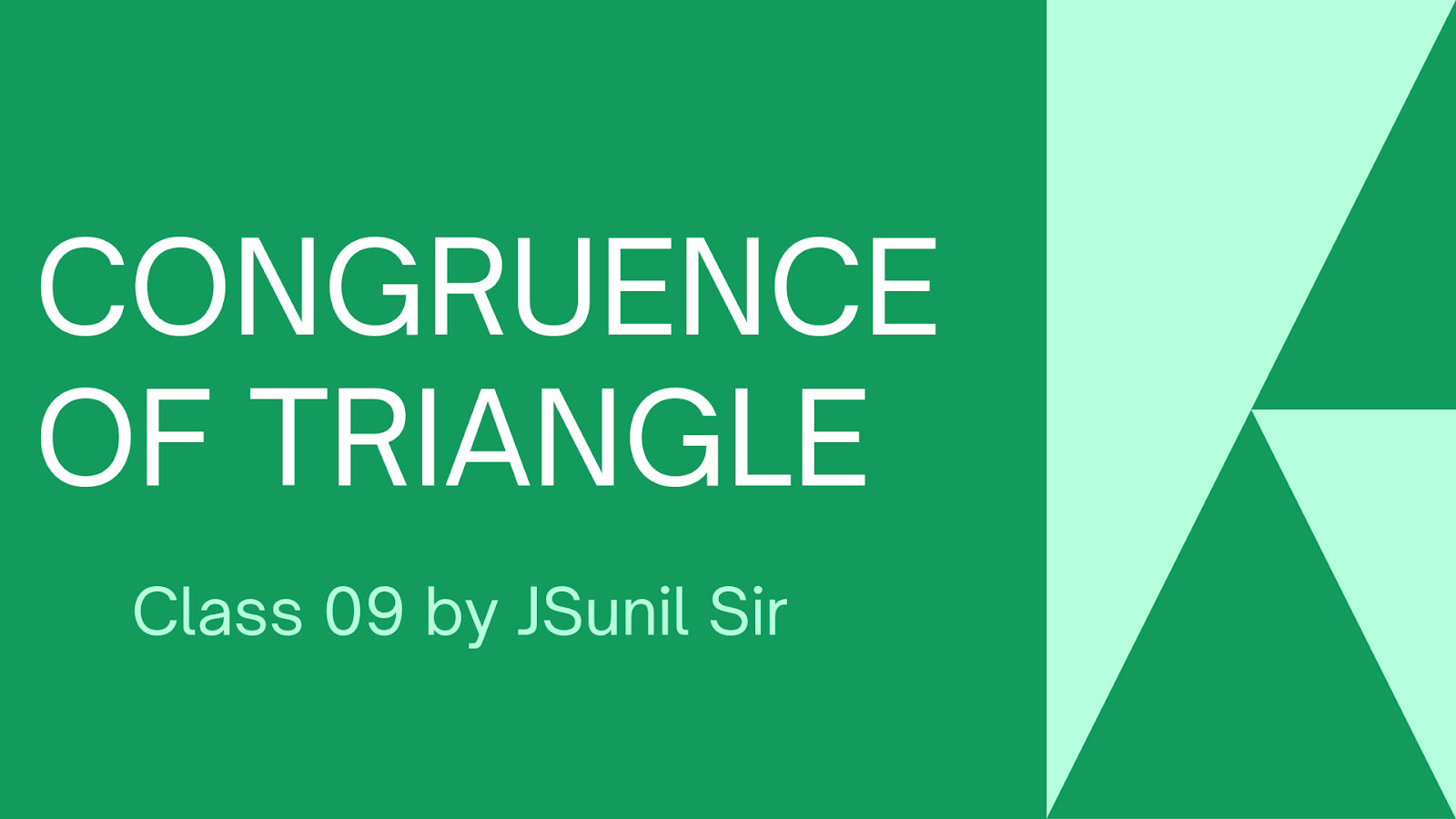CLASS 9TH CBSE MATHS
CHAPTER - TRIANGLE
CBSE TEST PAPER-1
1. PQ = PR of < QPR and S and T are point on PR and PQ such that ∠PQS = ∠PRT . Prove that Δ PQS ≅ Δ PRT.
2. Two lines AB and CD intersect each other at the point O such that BC || DA and BC = DA. Show that O is the midpoint of both the line-segments AB and CD( join B-C and A-D)
3. In triangle P Q R , PQ > PR and QS and RS are the bisectors of ∠Q and ∠R, respectively.
Show that SQ > SR
4. ABC is an isosceles triangle with AB = AC and BD and CE are its two medians. Show that BD = CE.
5. D and E are points on side BC of a Δ ABC such that BD = CE and AD = AE. Show that Δ ABD ≅ Δ ACE.
6. CDE is an equilateral triangle formed on a side CD of a square ABCD (join AE and BE). Show that Δ ADE ≅ Δ BCE.
7. BA ⊥ AC, DE ⊥ DF such that BA = DE and BF = EC. Show that Δ ABC ≅ Δ DEF.
8. Q is a point on the side SR of a Δ PSR such that PQ = PR. Prove that PS > PQ.
9. S is any point on side QR of a Δ PQR. Show that: PQ + QR + RP > 2 PS.
10. D is any point on side AC of a Δ ABC with AB = AC. Show that CD < BD.
11. l || m and M is the mid-point of a line segment AB. Show that M is also the mid-point of any line segment CD, having its end points on l and m, respectively.
12. Bisectors of the angles B and C of an isosceles triangle with AB = AC intersect each other at O. BO is produced to a point M.
CHAPTER - TRIANGLE
CBSE TEST PAPER-1
1. PQ = PR of < QPR and S and T are point on PR and PQ such that ∠PQS = ∠PRT . Prove that Δ PQS ≅ Δ PRT.
2. Two lines AB and CD intersect each other at the point O such that BC || DA and BC = DA. Show that O is the midpoint of both the line-segments AB and CD( join B-C and A-D)
3. In triangle P Q R , PQ > PR and QS and RS are the bisectors of ∠Q and ∠R, respectively.
Show that SQ > SR
4. ABC is an isosceles triangle with AB = AC and BD and CE are its two medians. Show that BD = CE.
5. D and E are points on side BC of a Δ ABC such that BD = CE and AD = AE. Show that Δ ABD ≅ Δ ACE.
6. CDE is an equilateral triangle formed on a side CD of a square ABCD (join AE and BE). Show that Δ ADE ≅ Δ BCE.
7. BA ⊥ AC, DE ⊥ DF such that BA = DE and BF = EC. Show that Δ ABC ≅ Δ DEF.
8. Q is a point on the side SR of a Δ PSR such that PQ = PR. Prove that PS > PQ.
9. S is any point on side QR of a Δ PQR. Show that: PQ + QR + RP > 2 PS.
10. D is any point on side AC of a Δ ABC with AB = AC. Show that CD < BD.
11. l || m and M is the mid-point of a line segment AB. Show that M is also the mid-point of any line segment CD, having its end points on l and m, respectively.
12. Bisectors of the angles B and C of an isosceles triangle with AB = AC intersect each other at O. BO is produced to a point M.
Prove that ∠MOC =∠ABC.
13. Bisectors of the angles B and C of an isosceles triangle ABC with AB = AC intersect each other at O. Show that external angle adjacent to ∠ABC is equal to ∠BOC.
14. AD is the bisector of ∠BAC. of DABC . Prove that AB > BD.
15. ABC is a right triangle and right angled at B such that ∠BCA = 2 ∠BAC. AD perpendicular to BC. Show that hypotenuse AC = 2 BC.
16. Prove that if in two triangles two angles and the included side of one triangle are equal to two angles and the included side of the other triangle, then the two triangles are congruent.
13. Bisectors of the angles B and C of an isosceles triangle ABC with AB = AC intersect each other at O. Show that external angle adjacent to ∠ABC is equal to ∠BOC.
14. AD is the bisector of ∠BAC. of DABC . Prove that AB > BD.
15. ABC is a right triangle and right angled at B such that ∠BCA = 2 ∠BAC. AD perpendicular to BC. Show that hypotenuse AC = 2 BC.
16. Prove that if in two triangles two angles and the included side of one triangle are equal to two angles and the included side of the other triangle, then the two triangles are congruent.
17. If the bisector of an angle of a triangle also bisects the opposite side, prove that the triangle is isosceles.
18. S is any point in the interior of Δ PQR. Show that SQ + SR < PQ + PR. { Produce QS to intersect PR at T}


Comments
Post a Comment